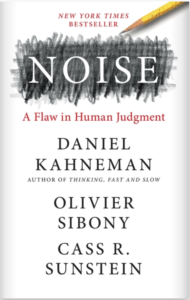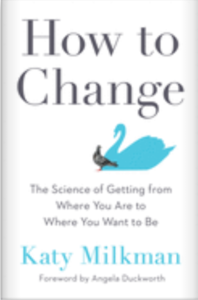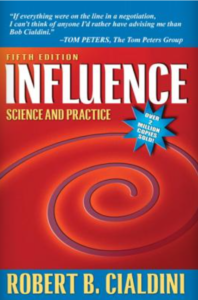Chris Cancialosi:
Welcome to the gothamCulture Podcast where we talk about any topic you’d like so long as those topics are organizational culture, leadership or people strategy. Each week we talk with industry leaders and discuss cultural opportunities and challenges in the workplace, providing you with actionable tips and strategies that you can implement in your organizations.
Kate Gerasimova:
Hi, my name is Kate Gerasimova. I’m a senior associate at Gotham culture and I have a pleasure today, Conrad Moore is joining us. Hi, Conrad.
Conrad Moore:
Nice to see you and hear you.
Kate Gerasimova:
Nice to see you too. Conrad Moore, he’s an owner of Maius Learning and he had a career that exposed him to different workplaces’ styles and structures and beginning first as educator in San Francisco before cofounding a nonprofit and eventually moving to adult learning organizational development. He worked with a variety of organizations from nonprofit to governmental agencies and Fortune 500 companies with very different places and industries. He’s focusing on enhancing community connection and culture at work. So I have a pleasure speaking with you today, and I’m very curious to learn more about your work. And can you tell me in our listeners what excites you the most about the work you do?
Conrad Moore:
Thank you for that lovely introduction. I think the thing that excites me about the work that I do is connecting with people. The story you told about my career is very winding. So I’ve been in a lot of different workplaces, work environments and taken on a lot of different roles. I’ve been a frontline worker. I’ve had some VP roles. I’ve started a couple companies by now. And so it’s really interesting to hear the different stories and where people are at work with culture, with connection with community and then to reach into my grab bag and think about, “Which of these experiences that I’ve had helps me relate to where they’re at and do I have anything in my grab bag that might help them move beyond any places that they’re stuck?”
But also, it’s a great way for me to connect to them and take learnings from them. Every client that I’ve worked with gives me a story that I can then learn from and tell to future folks that I work with. So I think the people in the end really make the work, fun and exciting and always new and interesting.
Kate Gerasimova:
That’s great. Absolutely. I can relate to that as well. And I know when we met and we were talking about some of the work that you do, specifically two topics were brought to my attention, were the values, the work that you do around the values and organizational justice. I thought it would be really great to talk more about both.
Conrad Moore:
Please.
Kate Gerasimova:
Well, let’s start with values and I think it ties in back into organizational justice. Starting thinking about the work, do organizational values define what’s really important in the organization?
Conrad Moore:
Yeah, and I’ve experienced that in a few different ways and I think a lot of places … You can feel the values in a work environment come through one way or another and sometimes you’ll see them on the wall. These are maybe top down values that were bestowed upon the people. And they may or may not be reflected in the work that people do. So there’s that value set that I think, especially in enterprise-size organizations and agencies, there is these marching orders that are values. And then there’s the lived values that we express every day. It’s the personal values that people bring to work, how those interact and overlap with other values and value systems that people have.
And so the workplaces that I’ve seen where values are really core to the identity of that place, that really shows up positively everywhere in the relationships, of course, in the ways that people communicate and connect to each other, but also the bottom line. When people really see a part of themselves in the work that they’re doing, I think it’s a lot easier for them to commit and really give their all towards producing. And so I think that that’s always to me when I think about doing values work like, “What am I dealing with? Is it a gap between the expressed values of the organization and the live values of the people working there or is there a more harmonious connection between the two?” And so I’m always looking for that first. It’s like, “What do you say you do and how are you actually feeling that?”
Kate Gerasimova:
What happens if you see a disconnect?
Conrad Moore:
Then we have to talk and those conversations are tough. The place says where I see, so I can even tell a story from my own personal working experience. I used to work for an organization where we did this whole month-long exercise as an organization that involves both facilitated conversations between leadership and frontline staff and then also a leadership retreat where we were really trying to focus on, “What are the values of this organization?” So it was fun. We did a trip to Vegas and Zappos was there and they’re very famous for their culture and how they think about their core values and that was supposed to inspire us.
And so we went in toward Zappos and learned about their culture and how they produced their core values and the way that they did that was they talked to everybody there and said, “Well, what do you think it’s like to work here? What are the best parts of what we do?” And that informed ultimately what became their core values. And so we were supposed to be taking a page out of that book, but what I experienced in my own story with this was there were folks on the leadership team, in frontline staff who were really committed and really inspired by that thought like, “Well, can we cocreate our values together and really create an identity together as an organization?”
And then there was a certain layer in the leadership team that it seemed like was just maybe checking some boxes here like, “Well, if we give them the chance to write the values, then maybe things will be okay,” but there wasn’t really any buy in from them. So that’s what I mean by hard conversations because I think that what they were really hearing were values that they didn’t feel represented their own. And so that’s where and that created a huge disconnect. In that moment. And ongoing in that company was there was one set of values that the top brass lived and worked by and those seem to cascade down from the top in ways that the folks who were living and breathing the rest of the work couldn’t identify with, didn’t understand and seemed to be in competition with the values they all cocreated together.
And so to me, when you have that disconnect, we need to have a cross organization discussion about, “What does it really like to work here and what do we want it to be like? And the values shouldn’t just be things that we put on the wall. It should be ways that we connect to the work and find it to be important to us.” Usually, those conversations can be a little prickly, but also if people come in with good intentions and openness and vulnerability, then you really can create values that are meaningful and actually impact the work, I think.
Kate Gerasimova:
Absolutely. There’s definitely evolution of values as well. So sometimes what I’ve seen in the work that we do, companies started long, long time ago was a certain set of values and then grow, evolve from a small startup to large corporations. And sometimes when you see the values that the founder created, let’s say 10, 15, 30 years ago no longer work because it’s a different work environment. And the follow-up question would be like, “At what point would you recommend them refreshing those values or what point do you know that they’re no longer working what they have?
Conrad Moore:
That’s an excellent question. I personally feel, and this is something I’ve practiced in my own organizations, that that needs to be just an ongoing conversation. That doesn’t even mean we need to every month come up with a new set of core values necessarily, but we do need to have an ongoing discussion about the work experience, “What is it like here? What are the stress points that people run into and where do those come from? And are we doing the work the way that we say that we’re doing it or we intend to do it? And if we’re living out of alignment with those values, what’s causing that?” To your point, it could just be, “We’re bigger now. Those don’t apply,” or it could be that those were never real. I just recently worked with a small startup business unit in a larger organization and so that larger organization had its values. They’ve been around since the ’90s.
This new unit was comprised of new employees who bring their own experiences in automatically just by virtue of being new or creating a new shared value system and so I came in to do a team building exercise. And that was largely the discussion that we had, “You have a parent organization here that has all these values. Is that how you feel your work is and what it shouldn’t be like for you?” There are some values like there was one that stood out to me which was urgency. That’s, to me, I don’t want to say a scary value, but a very particular value.
Kate Gerasimova:
A lot of pressure comes to that, when you-
Conrad Moore:
Exactly, and to have them be a startup entity within a larger context, there’s already pressure to begin with, to succeed, to grow, to prove that you should have been an investment, this company made in the first place. And then to feel like … They had that startup vibe. So there’s already urgency going on anyway. And so we talked about that. And so what we ended up doing was creating a team mission statement and a set of core values, and laid them next to the larger company’s mission statement and core values, but find a way for you to have your own identity that reflects who you are and what you do and complements the work that the larger company is doing and in a way that doesn’t set up a competition between what you’re doing, acknowledges where your starting point is which is them, but also really leans into who you are and what you want to build.
And so I think I’m still working with them, so we’ll see how that evolves over time. But I think that it was really interesting way to try to intervene in values that weren’t really applicable for them.
Kate Gerasimova:
So interesting, especially it’s always a question, “Where do you start? Do you start with the bigger values and you tried to figure out what you have as a subculture fits in that or is it the other way around?” I don’t know if this is the right way to do this. What’s your point of view?
I am very much interested in the idea of giving folks as much autonomy and self-governance as we can. I think you can stray too far in one direction or the other, right? If you’re too top down, then people have no freedom of expression and creativity. I think that hinders innovation and you can go too far in the other direction where like, “Okay, you guys are doing really cool things over there, but how does that connect to what the main company is doing?” And that’s a delicate balance, but I do think, especially from a leadership perspective, it’s helpful to have an ongoing, I think, like even just a mental exercise, but really a discussion of, “How can we delegate our decision making power and ownership further down the org chart?”
It takes great amounts of stress off of you because you’re not really responsible for everything anymore. It also lets people know that you trust them, that you’re willing to invest and have faith in what they can do. And so, I think having that be an ongoing discussion and working towards letting people control or have input on as much of their work experience as you can, so that their values come through and your values mean something. That’s not just words on the wall. You’re living values, you value your people, you value diversity, etcetera and then you express that by having trust and faith in your people.
Kate Gerasimova:
Also the question comes to mind is, for example, you’ve been in an organization, but you know that your values are not completely aligned, well, one, can you find an organization that completely aligns to your value? And two, what do you do if you feel like you’re not aligned?
Conrad Moore:
Well, to your point, first of all, I’ve never met that organization, big or small. To me, it’s a global thought process starting from hiring, right? You want to hire, of course, that talk about cognitive diversity, right? Diversity of thought. So you don’t want everybody to have the exact same values and everybody went to the same school or came from the previous company because you’re not really getting that diversity of thought that you want. But if there’s a misalignment within an individual or a team, I think there’s a couple ways you can approach that. You could explore like we’ve been talking about. Do we need to reboot their core values? Are they no longer relevant or add some nuance to them?
You could also do what I think some of the more innovative companies do is highlight those differences and try to celebrate and integrate them into the larger system. So rather than creating an environment that says, “We have seven core values. If you aren’t living into those, then you don’t belong here. We have these seven core values. We tried to embody them as much as we can and we have an openness to new ideas. We accept that this isn’t actually the way that it’s always going to work. And so I think a company that famously does this really well is Google where they’ll actually, because they have the money, fund projects where the people seem to have ideas that are out of the mainstream, but they might be a good idea if you just let it evolve and grow a little bit. And I don’t know that we all have the resources that Google has to let everybody run away with their competing values.
But I do think there is … If people seem committed to the work, but they see it from a different angle, I think there can be beauty and innovation in that. So I think the question is just, “What am I looking at here? Are we out of alignment because these values just don’t work for us or is there something of value in this difference? And how can we work with that to really build a more diverse and interesting workplace?
Kate Gerasimova:
That’s very beautifully said and it was a very hard question to answer.
Conrad Moore:
I got there.
Kate Gerasimova:
I think also one of the biggest value that they bring to the company is promoting the desired behavior. So me as a leader, I would know if there is a set of values created. They’re basically created for the purpose of promoting those behaviors. What’s your view on that? How do companies usually use those values to promote desired behaviors?
Conrad Moore:
Well, the short answer is I don’t know if they do. That’s how I feel so often when I do values work with folks. More often, I feel like, that’s probably why they come to me, more often I’m running into, “Oh, yeah, we just talking about these things. We haven’t really checked to see if people are behaving in this way.” And so a lot of that, again I think you can start with the hiring process and make sure that you’re trying to recruit and hire people who come in predisposed to behave in that way, but something I’ve also done comes through in the development of job descriptions. So if we’re looking at all of these different duties, I would sit with groups like I had to one of the companies I used to work at, where I was VP of operations. I had to restructure the whole sales and operations team.
And part of that process, well, actually, most of that process was not me coming in and saying, “Here’s how things ought to be.” It was talking to everyone and asked them what they thought things ought to be because they were doing the work. I think that from there, you can say, all right, so then a new job or this job has these duties to it, “What does it look like to be performed in accordance with our values? What behaviors would we see? So let’s say we value open communication.” So we started to go down all the different bullet points of each job role that we were building and looking at all the different duties and saying, “Okay, these are the systems that people interact with. These are the soft skills that they’re going to need to have, the communication skills, the customer service skills, say, the relationship building skills.”
And then if we were to see somebody performing this job and living up to our values, what would that look like? How would they perform this particular duty according to our values? And then, we turn that in interview questions where we would pose different problems that either we had already encountered and solved in one way and wanted to see if they agreed with that or just hypotheticals to see if we could hear like, “Oh, are we hearing that same value that we’re looking for in a way that they are theorizing performing the work?” So we’re really trying to look at the job duties themselves and then the associated behaviors and value connection that we would want to see and then have conversations about that with folks.
Kate Gerasimova:
So that helped to see specifically like what behaviors that the company have right now or what people are seeing and are they’re aligned with the desired behaviors that originally thought up?
Conrad Moore:
Yeah, precisely.
Kate Gerasimova:
And how would you measure those behaviors as a company? So some of the things you mentioned like during maybe performance management process or starting all the way from the hiring process?
Conrad Moore:
Yeah. So I think again part of behavior analyzing is just having these values be present in all of our conversations from the hiring and interviewing and training and onboarding when we talk about like, “Hey, this is how you do this thing, but also this is why you do it and why we think it’s important to do it this way.” And so then you have those ongoing performance check ins and you have the formal review at the end of the year. Some organizations are dropping that now, but have that really be woven into all of the “official conversations” that we have. We talked about it in meetings, right? If these are really values that we truly care about, then we should be referring to them often and trying to connect with them.
It’s like the way that mission-driven organizations, I hope, are connecting with the mission when they do the work like, “Those doing this work fulfill our mission.” And it might be the same way that we talk about core values like, “How can we do this work in a way that really represents who we say we aspire to be?” Because we’re not living out our values all day, every day. I always think of it as a horizon that we’re sailing towards. And if we take our eyes off the horizon, then we’re not going to ever get there. So as we do this work ongoing, we should keep talking about, “Is this the way that we feel about how we’re supposed to be doing this work?”
Kate Gerasimova:
Absolutely. That’s a great point. And some of the things that you mentioned is always bringing it up and having that conversation about it.
Conrad Moore:
That’s how you can see to like, “Oh, that value is not here anymore. We keep saying it, but we don’t really see it represented anywhere in the work, so we can’t measure that.
Kate Gerasimova:
Is it an extensive period of time? Have you ever put a timeline to that or is it, “We’re not seeing it for a while, let’s-“
Conrad Moore:
That’s a great question. Usually, when I’m talking to people, it’s been out of alignment for a while. That stuff shows up to me and like what we’re seeing right now, I think, is a gap in a lot of the expressed values of organizations and the lived experiences of the people working there with this whole great resignation and everybody’s either quitting or thinking about quitting and employers are having a harder time bringing people back. I think some of that is just fundamentally our employees feeling valued in the first place, but it shows up in those types of places like turnover, retention, engagement surveys and those things where you can just tell like, “Do people really want to be here?” because that’s some measurement or expression of either displaces at least out of alignment with the employees values, but probably even out of alignment with their own expressed values.
Kate Gerasimova:
That makes sense. We’re going to take a very quick break and we’ll be right back.
Chris Cancialosi:
This episode of the gothamCulture Podcast is produced and sponsored by our partners at Blue Sky Podcasting. Communicating with your customers, stakeholders and employees can be challenging at times. The team at Blue Sky Podcasting provides high-end production and postproduction support to organizations looking to leverage podcasting as a tool to increase transparency and engagement with their customers and employees. If you’re interested in learning how podcasting can provide your organization with a highly engaging communication tool that’s easy to scale, you should check out our partners at Blue Sky Podcasting at www.blueskypodcasting.com.
Kate Gerasimova:
We’re back and we were discussing values with Conrad and talking about values, and especially now in this day and age and then last year, companies specifically started to express more deeper value towards diversity, equity and inclusion. Conrad, in your opinion, how do values connect to organizational justice and diversity, equity and inclusion topic?
Conrad Moore:
I think this is such an important question to ask. I’m really excited first and foremost to see those types of conversations enter into the workplace more consistently and I think that the world is replete with examples of those conversations going poorly of large organizations, especially paying lip service to diversity, equity, inclusion and then not really living that. And some of that is I think we’re at the beginning of a cultural shift, just in general, but then also at work and then you add on to that, a pandemic and now this move towards hybrid work.
So there’s all this stuff happening that’s shifting conversations around and I think we’re far past the time … We can’t ignore this stuff. and so if companies are going to say, “These are our values,” then we really have to see where the rubber meets the road and that’s what organizational justice is about. It sounds a little bit like social justice and there’s actually, I think, a spirit in there that is similar. Organizational justice at its core, and this is a topic that started out in the ’90s even before I was in the workforce, frankly, but I think now it’s starting to become more relevant again. It’s just the perception of how fairly I’m treated and valued at work.
And so I think that’s the easiest and quickest way to describe this is, “How fairly am I treated and how valued do I feel?” There’s some more academic definitions we can get into, but I think at its core organizational justice, it’s just that.
Kate Gerasimova:
And what could be a couple examples would you see in organizational contexts?
Conrad Moore:
So this came up pretty extensively for me with a recent client. We were doing a leadership program. They’re a medium-size nonprofit and they were in year two of their DEI journey. They had a DEI steering committee and brought me in to complement the work that they were doing. Extensively, I was just doing a leadership program. And usually, the way I work is all broadly outlined based on our conversations like, “Here’s what I’m hearing. Here’s what I think we ought to do and let’s build in some space because we’re going to hear things that tend to only come out when a stranger is in the room and they think management’s not around and they can say stuff.”
That’s always been my experience is you hear things in trainings and facilitations that might be new to managers and leaders. And so I said, “We’re going to leave some space in this program for what comes up and we’ll generate content around that.” And a lot of the stuff that came up was around organizational justice topics like decision making. So in this particular organization as well as media organizations, I’m sure you’ve run into this also, there was a propensity for big impactful decisions to be made at the C-suite level, unbeknownst to everyone else and then leaders would come from on high and say, “Here’s the decision we have made that we didn’t tell you we were making and now you all have to follow this order.”
And you can imagine that really wrinkled people. And it was big stuff like hiring and firing staff where actually in some instances, there were like, privacy and legality reasons for why leadership wasn’t being 100% transparent about what they were doing, but still the feeling of the average employee in that organization is that they have no input on these decisions, that their opinions aren’t valued, that their knowledge and expertise isn’t valued. And so it just comes off as though you are not trusted or respected by the folks who mean to lead you. So that was an expression of a part of organizational justice which is basically called procedural justice and then it’s like, “How are decisions made? How are people given input into those processes?”
And again, you can’t always give people input, but then there has to be a followup outside of that where you say, “Hey, we made this decision,” like for example, “We had to let this person go. We know this person was well liked. There were some activities that just for fundamental reasons, we could not allow it to continue. We have spoken to this person several times. And while we can’t give you full view into how and why that decision was made, just understand that there were legal implications for why we did that.” And that’s what they could have said afterwards, so people go, “Oh, I understand now. I wish I had known about that, but I see why you can’t tell me,” and that never happened. It was just, “Wow, we fired that person. Everybody liked her. Why?” and that was it.
And then there’s this distrust that builds because it feels like there’s an unfairness that has happened. And again, it’s the perception of fairness. Sometimes we are actually being treated fairly, we just don’t have the full viewpoint, but it is the perception that’s going to drive the morale of everybody.
Kate Gerasimova:
Absolutely and there is a people perception of what actually happened. And then this particular situation that you’re describing, what are some things that leaders could have done or could do now to improve the situation and could rebuild the trust because the trust is broken?
Conrad Moore:
Those revelations started to come to me. This was a six-month program and that stuff came out in month two. They came through so strongly like the emotions. I think we were talking about some of these was like new manager training or training for managers who never had manager training and we were just talking extensively just about decision making, but those conversations became so charged so fast that I turned around to my point of contact and said, “Hey, I think we should start talking about organizational justice here,” and we should start having an open … I’ve explained the topic to them and all the things that entails, but actually what I did with them was help facilitate their solutions to these problems and acted as guardrails like in the example that I just gave to help them understand like, “You can’t have full transparency into every decision for a number of reasons. And so with that, what are the reasons, right?”
So we started to talk about who makes what decisions and we use this tool called the decision tree. It’s just not like the tool that you see in project management with all the splintering off of different nodes and that sort of thing. It’s actually just a metaphor, a visual metaphor for different types of decisions that are made and who has the authority to make what decision. And the idea was they would keep this and I’ll explain it in a second, but they would keep a running log of different decisions that were being made and then categorize them. And so a leaf decision is a very small, low impact decision that you as an individual, you don’t need to tell your manager like, “Hey, I’m going to go take a bio break. I don’t need to check in with anybody about stuff like that, right?”
But then you might have a branch decision, which is something a little more important where I still get to make my decision, but I do need to notify my manager that it happened. And so this might be, I don’t know, like closing down a particular customer complaint. That’s part of my job. I’m supposed to do that anyway, but this particular customer complaint was pretty serious. And so even though it’s within my authority to handle all of it, I’m going to still let my manager know what happened, what I did, so that there’s some record. And if the organization ever needs to do more with it, I’ve communicated that.
Then you have trunk decisions and that’s where I have the power to come up with a solution, but I really need to run that solution by my manager before I actually execute on it. And then you have root decisions which actually need to be escalated up the ladder. And so the idea there was to have them start logging down all the different types of decisions that were being made in different parts of the organizations and then look at those and go, “Okay, could we do anything with a higher level decision that would allow us to essentially delegate or offload it.” Right now, I might have the authority to make a route decision because I’m senior, but is that in the best interest of transparency, collaboration and inclusion? Maybe not. Maybe what I should be doing is making this decision, but also exposing the decision making process to people underneath me, so they understand how it works, and then over time, they can actually start taking part in those decisions.
And so that became a tool that a lot of different managers and leaders started to use and it’s just an ongoing. There’s like the decisions that that are named for us to make in our job descriptions and then there’s all the stuff we’re doing all day long that we’re not really tracking. And that was an opportunity for them to see like, “Oh, these are the different decisions that we’re making. Right now, we’re making them this way. How else can we make them so that we can include more people in that process?”
Kate Gerasimova:
What a great solution.
Conrad Moore:
I thought it was fun.
Kate Gerasimova:
It is. Can anybody in the organization see that tree or is it also visibility defined by the level?
Conrad Moore:
It would depend on … So the way that I set it up with them was just between managers and direct reports, but then it’s like now where everyone has that awareness. And so we didn’t get into that with them because the nature of their work in the populations that they were serving, there were medical things. There were things that I didn’t feel confident in advising them on. In terms of best practice, I would say the more open and accessible you have, like if you have, say like an intranet like SharePoint site and you can showcase that process decision making and how it’s made and how it evolves, I think that’s great because that helps everybody understand things better, but also there’s some stuff, like I said, you can’t share all of that with everyone for legal reasons and other stuff.
Kate Gerasimova:
That’s tough. And one thing that came to mind while you were describing this is sometimes there are different pockets of organization and then they are very different pockets, so there could be different subcultures or the work that they’re doing or some of the work that they’re doing could be disclosed from other sections of organization just because the confidentiality of that work. And then the decisions being pushed from top down and I understand they’re all made was being as fair and equal as possible, but at the same time, what is the best way for organization, and I know it’s tough, to make the differences?
So not everything will be fair and equal, but at the same time, there are differences that needs to be addressed because the differences between departments, the work they do, they’re not going to be all the same. So how do you draw the line between being fair and equal and allow for that innovation or difference to happen?
Conrad Moore:
Well, something, stay on that one client for a minute, that I thought they did really well and that really resonated with me because since you can’t always be fair and transparent, what then do you do when you can’t be? And they had a practice of circling up when somebody felt like a serious harm had been perpetrated against them. And so that was helpful for me as a facilitator because they already had these practices where, “Oh, we have to have a tough conversation. We’ve already got these ground rules for how we do that.” So that would be my recommendation for any organization, especially when you make that and I shouldn’t say when you make bad decisions, when you make unpopular decisions. Just to be ready-
Kate Gerasimova:
[crosstalk 00:35:11]
Conrad Moore:
Yeah, right, that’s diplomatic, is to be communicative about those. We understand that this was a hard decision for us to make. We knew that not everybody would feel happy or served by this decision and we want to talk about that. We know that even though the decision has been made, the experience isn’t over and we want to find our way to heal the culture as best we can, so that we can all move forward together and we can actually execute this unpopular decisioning. Because that’s the other thing is when you come out from on high and bestow upon the people, this new direction that you’ve decided on unilaterally without their input, it’s also a lot harder for people to execute that decisioning because they don’t understand the context in which it was made. So if you come in afterwards and say, “All right, we know how you feel. Here’s as much of the process as we can share with you in our reasoning, and we want to hear from you your feedback so that maybe in the future we’ll both consider that when we make this type of decision.”
Kate Gerasimova:
That’s a great process that you just described. I wish I’ve seen those more circle or in place. What do would you call them?
Conrad Moore:
Well, so they were following a particular restorative justice. I don’t know how familiar folks are outside of education and nonprofit that work with that, but restorative justice is a particular field of work that tries to look at harm that was that has occurred, bring the parties together who committed and experienced the harm and to have the party who is responsible for that harm find a solution that restores the relationship that brings trust back into the relationship that acknowledges that, “You’ve been hurt and the person who unwittingly or no cause that hurt and try to find a way for me to make it right with you.” And so the classic example they use in a lot of restorative justice circles is, “I hit a baseball over the fence and it broke your window and I help pay for the window, right? Because I understand I’ve damaged your home and I’m going to do my best to make it right for you.”
Kate Gerasimova:
That is a good example and a very simple one, but going back to the example that you provided, there is a lot to do with trust and rebuilding trust which takes time.
Conrad Moore:
It does.
Kate Gerasimova:
And then just thinking about organizational justice overall, what are some criteria given to organizations or if there is any that helped them decide whether this organizational justice is assured or if there’s anything individuals can do to raise their concern?
Conrad Moore:
Yeah, well, so I feel like we spent so much time on the part of that work which is procedural justice and decision making. And it is not all decision making. That’s a huge part of it, but the other dimensions of it are the feeling I get of being valued and heard and seen and appreciated. So that’s like a soft skill cultural professional skill element, right? So some of that, for example, is like, “How do we onboard people? Do we just give them a checklist and they run through the checklist and take a bunch of eLearning and now they’re on boarded or are we actually really taking very personal steps to welcome them, to introduce them to people, to integrate their voices and views and meetings and even decisions early on if that’s appropriate or possible?” So there’s kind of an energy of inclusion and belonging that is a part of organizational justice as well that really comes out in business processes like hiring and meetings and things like that.
And then the other part, again, it’s like the perception of fairness, “So how are rewards distributed in distributive justice?” It’s like this other pillar. And so looking at things like, “How are we promoting people? Who’s getting promoted? Does it appear?” Sometimes, for example, we’re promoting the right person who also happens to have really strong relationships with the layer that they’re getting promoted into. And so that can give the perception that they got the job because they’ve got the right friends and so, “How are we talking about promotion and what is the criteria that we’re using to promote people so that we can talk about that messaging and what people’s perceptions of fairness are? What about raises? Are there other particular perks that come with working at this organization and does everybody get those or do only certain people get those and then why?”
The one thing about organizational justice that’s hard is its perception. And so you might actually objectively be engaging in fair decision making and processes, but someone else can perceive it. From where they sit in the organization is unjust. So like I was saying about values, I think that organizational justice is a horizon that we’re sailing towards, that we’re always trying to aim to reach and we understand that we’re going to fail sometimes. We’re going to miss something. We’re going to make mistakes and then it always has to come back to, “How do we talk about that? Do we acknowledge it? Especially this is so hard for leaders, a lot of leaders sometimes, but do you admit mistakes in attempt to atone and change your behavior or do you just soldier on and pretend like it didn’t happen?” And I think a lot of people do that.
Kate Gerasimova:
For sure. And one last question for you is what can I, as individual in a corporation, organization or startup or whatever company I am in, do to help the company see or be better aligned with organizational justice?
Conrad Moore:
Especially if you’re new, I think that can be a really intimidating pursuit, right? Because you really just want to blend in and hope that everybody likes you and that you can keep this job and succeed in it, but the first thing I would start looking for is what resources do employees have like employee resource groups or affinity groups. Are there places where, I don’t know that I want to paint this fully as like a power struggle between the top of the org chart and the bottom of the org chart, but what avenues do employees at any level have to express their experience at work?
Oftentimes, it’s like an HR survey or something or maybe to a manager, but I would just try to identify first like, “What are those channels, frankly, for a dissent? If I have an opinion that might ruffle some feathers, is there a place for me to channel and express that opinion? If there’s not, this is going to be a tough place to work.” Most places have something somehow and then some places are really well resourced. Like I was saying, they have employee resource groups or affinity groups, groups of people with particular social identities or particular interests where you can go into a community of people within an organization that are like you, that have similar experiences and you can commiserate about the bad stuff and you can celebrate the wins.
And so as an individual, I would look for those things first, and then over time, you’ll know it based on how everyone’s talking and how you experience it. You can tell that grumbling around the watercooler is probably some dimension of organizational justice, “I don’t like how that decision was made. I disagree with it. Nobody values my opinion,” that sort of thing. So you can see it in the ways that people behave. I don’t know that I’m aware of, if you walk into an unjust organization and you’re the one person blowing the whistle, I’m not aware of anybody succeeding at that. That’s an unhealthy toxic work environment. And then fortunately, there’s a lot of those out there, but I do think you can just ask yourself the question like, “Do I feel valued? Do I feel important? Does it feel fair to me? And if it doesn’t, why not?”
Kate Gerasimova:
Thank you, Conrad and thank you for those resources. And thank you for the time today. It’s been a great conversation. I think I can continue talking to you for a while on both topics.
Conrad Moore:
Thanks, Kate. It’s been such a pleasure chatting with you. And I’m sure we’ll do this again sometime.
Kate Gerasimova:
And one last thing is how can our listeners find you?
Conrad Moore:
Sure. Well, you can find me at Maius Learning which is M-A-I-U-S, learning, dot-com and see all the fun trainings and other activities that we have going on there.
Kate Gerasimova:
That’s great. I hope to stay connected and enjoy your weekend.
Conrad Moore:
All right, you too. Thank you.
Kate Gerasimova:
Thank you.
Chris Cancialosi:
Thanks for joining us this week on the gothamCulture Podcast. Make sure you visit our website gothamculture.com where you can subscribe to the show, find show notes or contact us for support regarding your organizational culture challenges. Special thanks to Blue Sky Podcasting for producing and sponsoring this episode. To learn more about producing custom podcasts for your organization, check out the folks at Blue Sky at www.blueskypodcasting.com. Until next time, this is your host, Chris Cancialosi and I look forward to our next discussion.




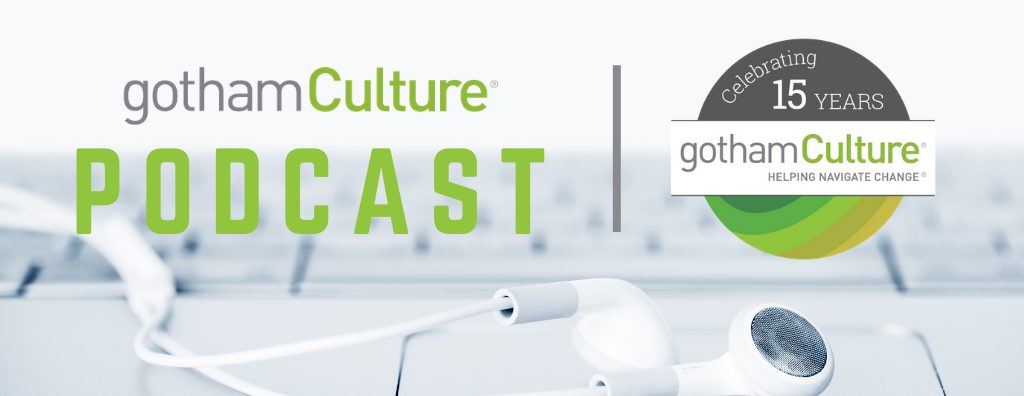





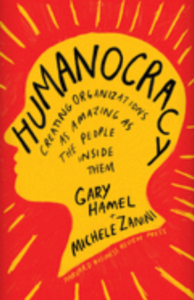 ng organizations as amazing as the people inside them
ng organizations as amazing as the people inside them
